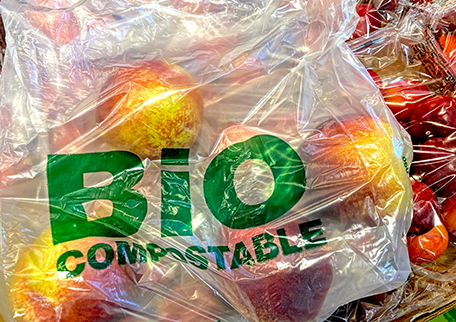Let's Use Less Packaging
This blog post was written by Liluye Staff Writer, Katie Hutchinson, who is a driven and compassionate environmentalist and humanitarian.
I had been looking for a good lemon zester (for baking needs) for a while now. After many reviews from people who seemed to know their way around a kitchen were read, I ordered it (I love baking and cooking… future food blog to come… haha). When it arrived, I opened the box that was 14 x 10 x 6 inches, to find a small, flat 7-inch zester filled with packing peanuts and plastic for absolutely no reason. I walked over to my recycling bin, recycled what I could, and threw out the rest.
According to the McKinsey Institute that monitors sustainability practices and faults around the globe, recycling rates for plastic packaging are low. “In the United States, for example, waste is generally managed with low leakage but recovery rates for packaging and food-service plastics are about 28%. The plastic-packaging recycling rate in Europe was somewhat higher at approximately 40%, compared to approximately 80% for paperboard, and 75-80% for metal and glass” (Berg et al, 2020).
Single-use plastic is anything but sustainable. It’s as simple as that. The purpose is to forget about it, throw it away the second you can, and purchase more boxes down the road when you decide to move. It finds its way into streets, gutters, rivers, and water systems, and in some cases, into our food.
The single-use plastic, niche market originated out of a powerful trend driven by consumer preferences. For example, you decide you want a new tennis skirt. You go on Amazon, find one that suits your needs quickly, order it, and have it show up on your doorstep three days later. Typically, the skirt is in a box filled with plastic air pouches to keep it from moving around the box and wrapped up in a plastic bag with a thin plastic sheet delicately placed in between each fold of it. Digital consumerism has only increased the demand for single-use packaging, too.
This image is far too familiar… opening up a package and thinking “gosh, this is a huge box for this tiny item.” It’s all too common of a practice. We are all a part of the vicious cycle, but awareness is the pivotal, first step to creating change.
Fairly recently, consumer awareness of this packaging issue has created a new outcome. Governments at all levels: local, state, and federal have begun banning single-use plastic and placing strict recycling and composting targets to meet. Packaged goods manufacturers and retailers alike have made a change and are more committed to cutting back on their waste, too (Berg et al, 2020). To find out more, visit your local government’s website to see what is happening in your area.
It’s not just retailers, though, that are part of the problem. The food industry is to blame as well. “Packaging is the main source of the plastic pollution that is clogging the ocean and is expected to exceed the weight of all fish by 2050 at current rates. The food industry is mainly responsible for this growing packaging problem (Fagundes, 2021).
However, there are small changes we can make now that will make a difference, such as buying loose produce and fruit instead of pre-packaged. It’s usually cheaper and tastes exactly the same. You can also purchase small amounts in bulk. Lastly, and the one that is most obvious, bring your own bag to shop with. Through these steps, change is possible, and we can change packaging norms altogether.
Whether you are buying a zester, skirt, food, or anything in between, packaging is something that comes with your purchase and is something to think about. As consumers are becoming more aware and telling manufacturers what their preferences are, we are seeing less plastic packaging, fewer single-use containers, and more biodegradable options. It’s because of people like you who care that things are changing.
Post Sources
• 16 Companies Rethinking Packaging. Date: 2021. Written by: Colton Fagundes. (Food Tank)
• The drive toward sustainability in packaging—beyond the quick wins. Date: January 30, 2020. Written by: Berg et al. (McKinsey)



